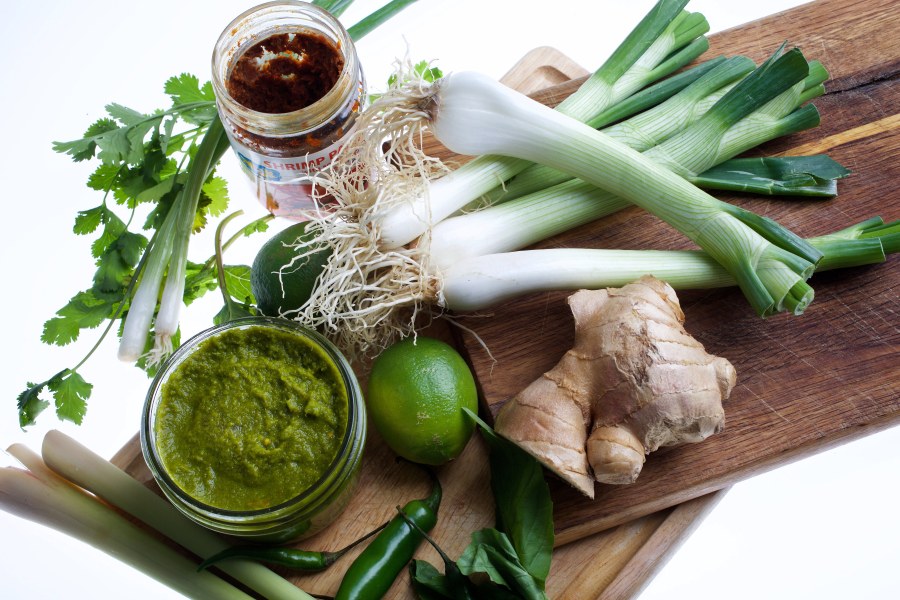As if they are bursting from the earth, the greenest foods are now everywhere: asparagus and peas, ramps and spring garlic, sorrel and onions, bok choys and young kale, and bright, fresh herbs. A spicy green curry paste is one way to make the most of a lot of them. Whir the ingredients together, pack in freezer-friendly containers and you’ll have the basis of a satisfying, fresh-tasting meal.
There are many commercial varieties of curry paste, but I wanted to DIY a pantry (freezer) version that would sing with the flavors of the season. Garlic is always front and center in a store-bought paste, so I opted for spring garlic bulbs and their green scapes. Along with cilantro, plenty of mint and basil boosts the herbal notes.
Curry pastes are shot through with the tingle of floral galangal, but fresh ginger is a suitable substitute. Because the traditional lime leaves can be difficult to find, I used plenty of fresh lime zest and juice instead.
Chilies are essential for both the heat and zesty complexity of traditional curries. My preference is for a combination of assertive Thai chilies and familiar, fruity serranos. Remove the peppers’ seeds, and the paste is mildly spicy, with a family-friendly zing; if you are a heat-seeker, add some seeds to the mix. If red curries are your preference, substitute small red bird chilies and Fresnos or Chinese long red chilies, each one substantially zippier than their green cousins.



